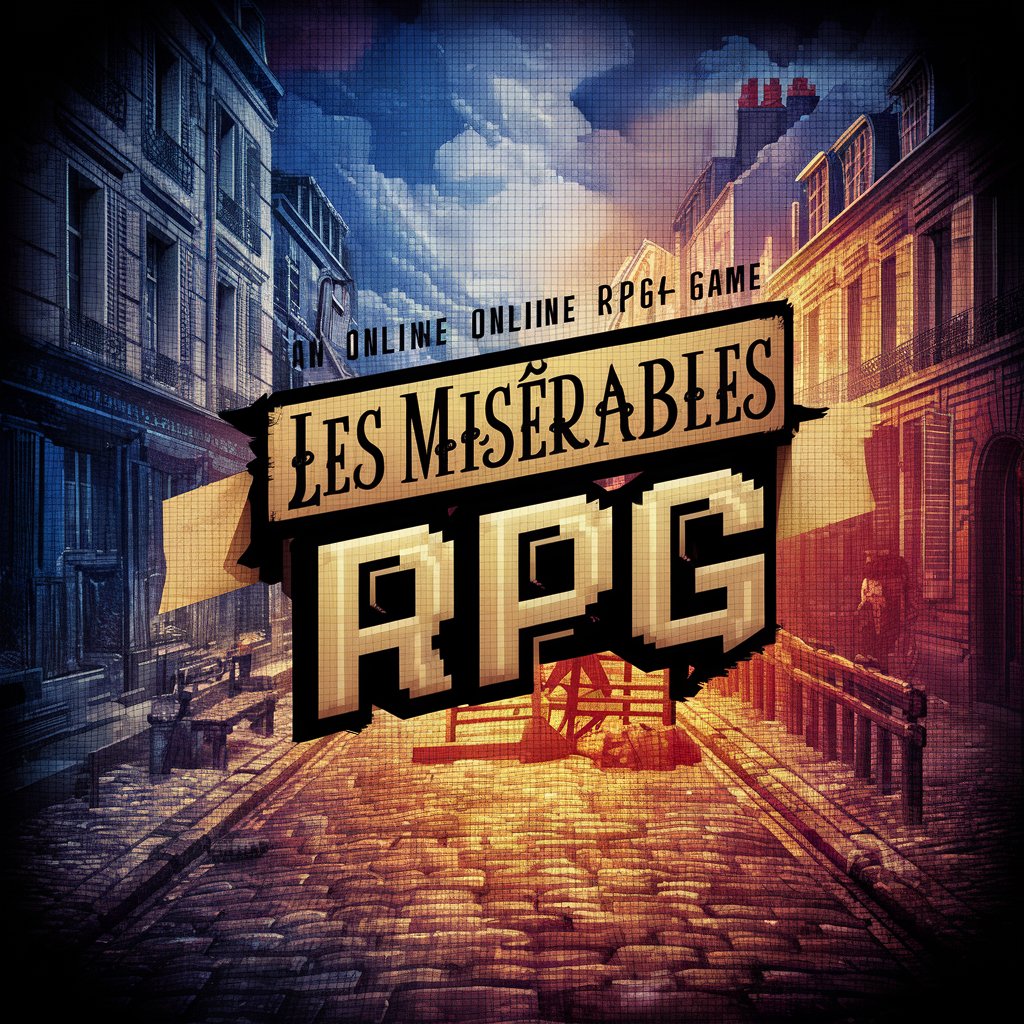
Les Misérables Guide - Detailed Les Misérables Insights

Hello! I'm here to guide you through 'Les Misérables.'
AI-powered deep dive into Les Misérables
Explain the significance of the barricade scenes in 'Les Misérables.'
How does Victor Hugo use symbolism in the character of Jean Valjean?
Discuss the historical context of France during the time 'Les Misérables' is set.
Analyze the theme of redemption in 'Les Misérables.'
Get Embed Code
Introduction to Les Misérables Guide
Les Misérables Guide is a specialized tool designed to offer in-depth insights into Victor Hugo's classic novel, 'Les Misérables'. This tool provides comprehensive explanations and summaries of the novel, enhancing understanding of its complex narrative structure and extensive character connections. It also delves into the historical context and social conditions of 19th-century France, illustrating how these elements influence the plot and themes of the novel. Additionally, it analyzes Hugo's literary techniques, discussing symbolism, allegory, and the narrative's impact on thematic comprehension. This guide is tailored to transform intricate literary and historical concepts into accessible and engaging information, aiming to enrich the reader's experience and understanding of the novel. Powered by ChatGPT-4o。

Core Functions of Les Misérables Guide
Narrative Comprehension
Example
Explaining the storyline of Jean Valjean from his release from prison to his moral redemption and the impact of other characters on his life.
Scenario
A user is confused about the timeline or relationships between characters such as Cosette, Marius, and Éponine. The guide clarifies these relationships and outlines the progression of events linking these characters.
Historical Context
Example
Detailing the significance of the Battle of Waterloo in the novel and how it affects the fate of characters like Thénardier.
Scenario
A student studying the historical aspects of 'Les Misérables' receives a detailed explanation of the political and social climate of post-revolutionary France, aiding in their understanding of the setting and motivations of the characters.
Literary Analysis
Example
Analyzing the use of symbolism in 'Les Misérables', such as the sewers of Paris representing societal decay.
Scenario
An enthusiast of literary techniques queries the symbolic elements in Hugo's writing. The guide provides an analysis of various symbols and allegories throughout the novel, enhancing the user’s appreciation and interpretation.
Ideal Users of Les Misérables Guide
Students and Academics
Students studying French literature or those involved in comprehensive literary studies would benefit from detailed narrative analyses and historical contexts that aid in their academic pursuits and deepen their literary appreciation.
Book Clubs and Literature Enthusiasts
Members of book clubs or individual readers with a keen interest in classic literature can use this guide to gain deeper insights into the novel's themes and structures, enhancing their discussions and personal reading experience.
Writers and Researchers
Writers and researchers working on topics related to 19th-century French literature or adaptations of classic texts will find the in-depth analysis of narrative techniques and thematic explorations useful for their projects and scholarly articles.

How to Use Les Misérables Guide
1
Initiate your literary journey with Les Misérables Guide by heading to yeschat.ai, where a free trial awaits without the need for logging in or subscribing to ChatGPT Plus.
2
Prepare specific questions or sections from 'Les Misérables' that you need assistance with, whether it's for understanding the plot, historical context, character analysis, or literary themes.
3
Paste your text or pose your question directly into the chat interface. Be as specific as possible to ensure the most accurate and detailed guidance.
4
Utilize the provided information to deepen your understanding of 'Les Misérables,' whether for academic purposes, personal interest, or preparation for discussions and exams.
5
For optimal experience, engage with the Guide's analysis and explanations by asking follow-up questions or seeking clarification on complex themes or historical events mentioned in the novel.
Try other advanced and practical GPTs
Les Conseils de Mimir
Enlighten Your Ideas with AI

Grandpa Joe
Reviving stories with AI precision

Grandpa
Empowering conversations with AI wisdom.

Environmental Ethics Mentor
Empowering Ethical Environmental Decisions

AI Ethics Educator
Empowering Ethical AI Decisions

Plan de Negocios MBA
AI-driven solutions for your business growth.

Analista de Proyectos de Negocio
Empower Your Business Strategy with AI

Merch Dominator Assistant - Merch Print on Demand
AI-driven solutions for Print on Demand
Merch Maestro
AI-powered product content creation tool
Merch Idea Extractor
AI-powered t-shirt ideas from content

OS Expert
Navigating OS complexities with AI

Therapy OS
Empowering Therapy with AI Insights

Frequently Asked Questions about Les Misérables Guide
Can Les Misérables Guide help me with understanding the historical context of the novel?
Yes, the Guide offers detailed explanations of the historical events and social conditions in France during the time 'Les Misérables' is set. It elucidates how these elements influence the novel's plot and themes, aiding in a deeper comprehension of the story.
Is it possible to get character analysis from Les Misérables Guide?
Absolutely. The Guide provides in-depth analyses of major and minor characters in 'Les Misérables,' exploring their motivations, relationships, and development throughout the novel, which enhances understanding of their roles in the story.
How does Les Misérables Guide assist with narrative comprehension?
The Guide excels in breaking down the complex plot of 'Les Misérables,' summarizing key events, explaining subplots, and detailing the connections between characters, which aids in grasping the full narrative scope of the novel.
Can the Guide analyze Hugo's writing style and literary techniques?
Yes, it discusses Victor Hugo's use of symbolism, allegory, and various narrative techniques, offering insights into the structure of 'Les Misérables' and its impact on the reader's interpretation of the themes and messages.
Is Les Misérables Guide suitable for academic use?
Definitely. The Guide is an invaluable resource for students, educators, and researchers, providing comprehensive analyses that can support essays, discussions, and studies related to 'Les Misérables' and its literary and historical significance.





